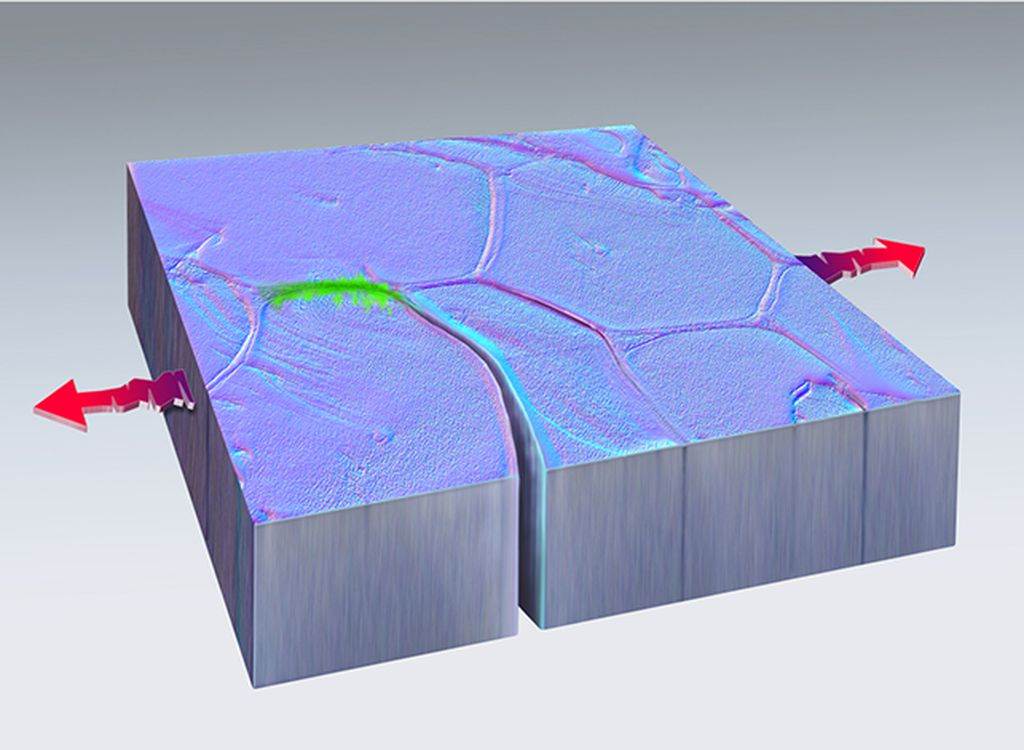How wonderful would it be if the engineered world around you were to heal, and repair itself to maintain its integrity? Something that belongs to the realm of science fiction has found a foot in the real world when scientists observed a metal healing itself, something never seen before.
Unlocking the full understanding and control of this process may mark the beginning of a revolutionary phase in engineering.
In a July-published study, a collaborative team from Sandia National Laboratories and Texas A&M University investigated the metal’s resilience by employing a specialized transmission electron microscope technique. This technique involved subjecting the metal to 200 pulls per second.
Their focus was on observing self-healing at ultra-small scales within a 40-nanometer-thick platinum fragment suspended in a vacuum.
The cracks induced by the aforementioned strain are recognized as fatigue damage—microscopic breaks resulting from repeated stress and motion, eventually leading to the breakdown of machines or structures.
Remarkably, after approximately 40 minutes of scrutiny, the crack in the platinum began to fuse and mend itself before initiating a new direction of propagation.

“This was absolutely stunning to watch first-hand,” said materials scientist Brad Boyce from Sandia National Laboratories when the results were announced.
“We certainly weren’t looking for it. What we have confirmed is that metals have their own intrinsic, natural ability to heal themselves, at least in the case of fatigue damage at the nanoscale.”
These conditions are precise, and the exact mechanism and potential applications remain unclear.
Nevertheless, when considering the expenses and labor involved in repairing a wide range of items, from bridges and engines to phones, the impact of self-healing metals could be substantial.
While the observation is groundbreaking, it is not totally surprising. In 2013, materials scientist Michael Demkowicz from Texas A&M University conducted research predicting the occurrence of nanocrack healing.
This phenomenon is driven by the minute crystalline grains within metals, which essentially adjust their boundaries in response to stress.
Demkowicz, involved in both the earlier study and the recent one, utilized updated computer models to demonstrate that his decade-old theories regarding metal’s self-healing behavior at the nanoscale align with the observed outcomes.
An encouraging aspect of the research is that the automatic mending process occurred at room temperature.
Usually, metal requires considerable heat to undergo shape changes, but the experiment did take place in a vacuum, which is far from natural conditions.
Whether this process occurs in conventional metals under typical environmental conditions remains to be seen.
A likely explanation of the phenomenon involves cold welding, a process that occurs at ambient temperatures when metal surfaces approach closely enough for their atoms to intermingle.
Typically, thin layers of air or contaminants disrupt this process — however, in environments like the vacuum of space, pure metals can be compelled close enough together to adhere.
“My hope is that this finding will encourage materials researchers to consider that, under the right circumstances, materials can do things we never expected,” says Demkowicz.
The research was published in Nature.



